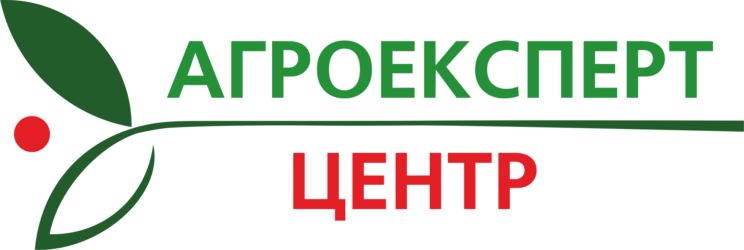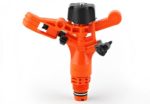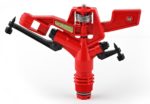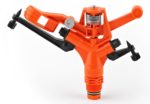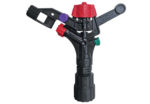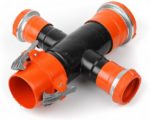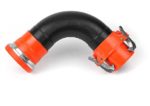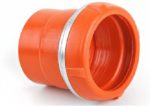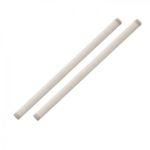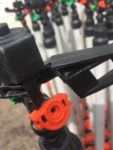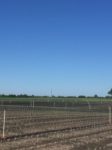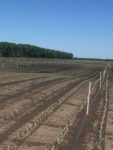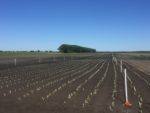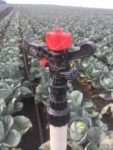Unlike drip irrigation, sprinklers increase the air humidity in the surface layer and reduce the temperature of the soil. Stationary sprinkler irrigation systems provide a high watering rate and optimal irrigation frequency even in the hottest and dryest periods.
Sprinkler irrigation is a very common type of irrigation in many countries on potatoes, carrots, cabbage, green crops, due to local conditions, high evaporation and small size of fields – 10-50 hectares
For even irrigation even in windy weather, sprinklers are installed in such a way as to provide a 300% overlap. Systems are designed with a watering rate of 6-8 mm / ha per day, watering is usually carried out once every 5 days with an expenditure of 300 – 400 m3 / ha. In periods with high daytime temperatures and high evapotranspiration, it is recommended to spend nightly irrigation.
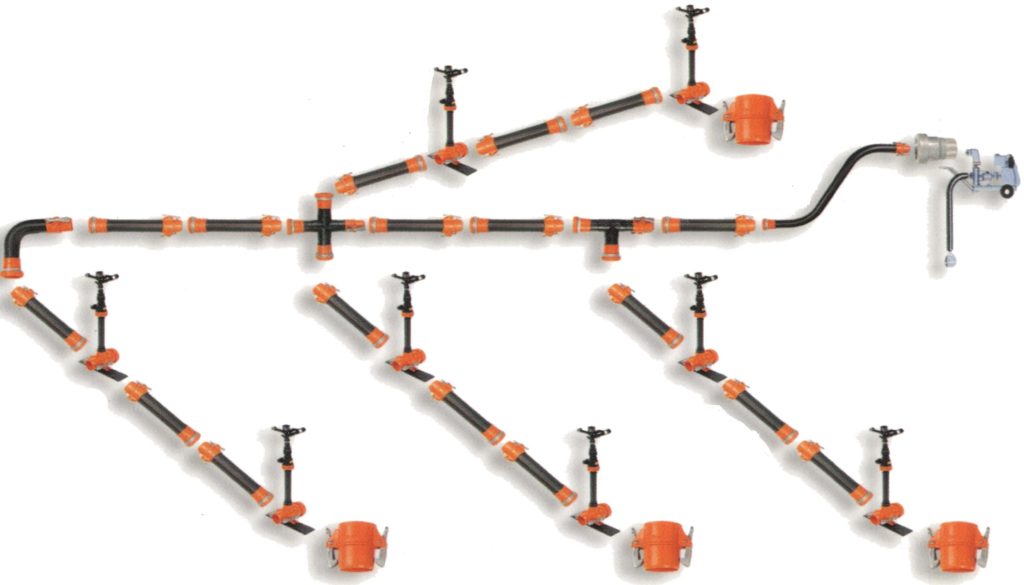
Sprinkler irrigation is economically advantageous because, unlike mobile machines, stationary systems can provide high irrigation frequency and optimal irrigation even during the hottest and dry periods. Installation and maintenance of the system does not take much time and does not require specially trained staff.
Mobility sprinkler irrigation system enables fast transfer to its new location, and ease of preparation and storage mizhpolyvnyy season.

Applications:
- In crops that are relatively disease-tolerant when water gets to the leaves (more suitable for vegetables that require continuous watering) In gardens, each tree has an individual sprayer.
- Sprinklers are also effective for controlling the climate, as cooling systems and for frost protection.
- When growing seedlings in greenhouses, seedlings in nurseries and strawberries.
Advantages of sprinkler irrigation: - Creating a favorable microclimate for plant growth and development (optimal moisture
- The quality of soil and air contributes to a high yield of excellent quality.
- The ability to add soluble fertilizers together with water.
- Effective use of water resources, water consumption is 60-70% lower than in conventional sprinklers.
- Saving energy and labor costs.
- Ease and speed of installation years and above.
Types of sprinklers:
Plastic fittings for sprinkler irrigation:
SPRINK irrigation of cabbage
The raindrop sector is in operation
SPRINK 2520 in work
SPRINK КА-30 in work
